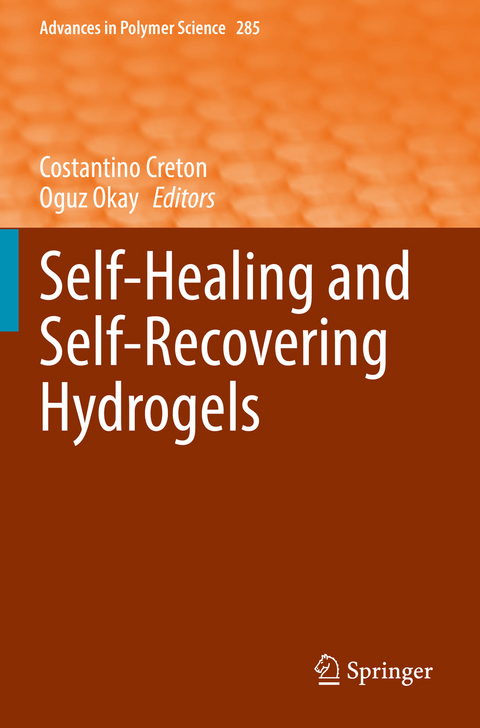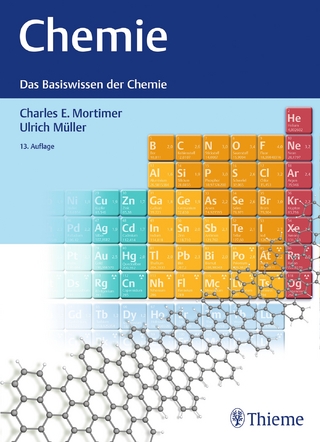
Self-Healing and Self-Recovering Hydrogels
Springer International Publishing (Verlag)
978-3-030-54558-1 (ISBN)
This volume covers experimental and theoretical advances on the relationship between composition, structure and macroscopic mechanical properties of novel hydrogels containing dynamic bonds. The chapters of this volume focus on the control of the mechanical properties of several recently discovered gels with the design of monomer composition, chain architecture, type of crosslinking or internal structure. The gels discussed in the different chapters have in common the capability to dissipate energy upon deformation, a desired property for mechanical toughness, while retaining the ability to recover the properties of the virgin material over time or to self-heal when put back in contact after fracture. Some chapters focus on the synthesis and structural aspects while others focus on properties or modelling at the continuum or mesoscopicscale. The volume will be of interest to chemists and material scientists by providing guidelines and general structure-property considerations to synthesize and develop innovative gels tuned for applications. In addition it will provide physicists with a better understanding of the role of weak interactions between molecules and physical crosslinking on macroscopic dissipative properties and self-healing or self-recovering properties.
lt;b>Oguz Okay is currently a full Professor of Physical Chemistry at Istanbul Technical University and a principal member of The Turkish Academy of Sciences (TUBA). He received B.S. and M.S. degrees in Chemical Engineering from the University of Istanbul in 1977, and a Ph.D. in Polymer Chemistry in 1981 at Vienna Technical University, Austria. He was visiting professor at the University of Stuttgart, Technical University of Dresden, University of Colorado, Boulder, Technical University of Clausthal, and Helmholtz Zentrum Berlin. He is the recipient of several awards including Georg-Forster Research Award from Germany (2015), the Turkish Scientific and Technological Research Council (TUBITAK) Science Award (2005), and Turkish Chemical Society Honorary Member Award (2006). He is an editorial board member of the Turkish Journal of Chemistry (Tübitak), Reactive and Functional Polymers (Elsevier), and one of the series editors of Advances in Polymer Science (Springer). His research expertise include design/synthesis of soft and smart polymeric materials. He has 5 patents and has published around 200 scientific papers in peer-reviewed journals. His H-index is 56 with over 10.000 citations.
Costantino Creton is currently a C.N.R.S. Research Director at the ESPCI Paris-PSL and the VP research of the same institution. He graduated in Materials Science from the EPFL in Switzerland in 1985. before obtaining his Ph.D at Cornell University in 1991. After a post-doc at the IBM Almaden Research Center (USA), he joined the ESPCI Paris first as a post-doctoral associate in 1993 and, since 1994 as a C.N.R.S. permanent researcher. He was promoted to CNRS research director (equivalent to Professor) in 2001 in the Laboratory of Soft Matter Science and Engineering. His research interests focus on the deformation and fracture of soft polymer materials in the bulk and at interfaces. He has received several prizes and awards including the Adhesion Society's prize for Excellence in Adhesion Science in 2013. He is a fellow of the American Physical Society, distinguished Professor of the Unviersity of Hokkaido in Japan and received an ERC Advanced Grant in 2016 to work on fracture of soft materials.He has published more than 200 articles in peer-reviewed journals cited more than 11000 times, and has given more than 110 invited and plenary lectures at international conferences.
Dual Crosslink Hydrogels with Metal-ligand Coordination Bonds: Tunable Dynamics and Mechanics under Large Deformation.- How to Design Both Mechanically Strong and Self-Healable Hydrogels?- Rheology, Rupture, Reinforcement and Reversibility: Computational Approaches for Dynamic Network Materials.- Mechanics of Polymer Networks with Dynamic Bonds.- Hydrophobically Associating Hydrogels with Microphase-Separated Morphologies.- Triblock Copolymer Micelle-Crosslinked Hydrogels.- Self-Healing Hydrogels Based on Reversible Covalent Linkages: A Survey of Dynamic Chemical Bonds in Network Formation.- Tough and Self-Healing Hydrogels from Polyampholytes.- Dynamics in Cellulose-Based Hydrogels with Reversible Cross-Links.- Self-Healing Collagen-Based Hydrogel for Brain Injury Therapy.
| Erscheinungsdatum | 10.10.2021 |
|---|---|
| Reihe/Serie | Advances in Polymer Science |
| Zusatzinfo | VIII, 380 p. 1 illus. |
| Verlagsort | Cham |
| Sprache | englisch |
| Maße | 155 x 235 mm |
| Gewicht | 593 g |
| Themenwelt | Naturwissenschaften ► Chemie ► Organische Chemie |
| Technik ► Maschinenbau | |
| Schlagworte | Bonded hydrogels • polymer networks • Self-healing hydrogels • Self-Recovering Hydrogels • Triblock copolymer micellar hydrogels |
| ISBN-10 | 3-030-54558-X / 303054558X |
| ISBN-13 | 978-3-030-54558-1 / 9783030545581 |
| Zustand | Neuware |
| Haben Sie eine Frage zum Produkt? |
aus dem Bereich


